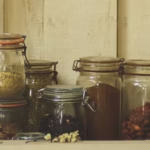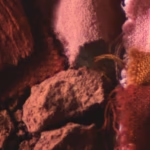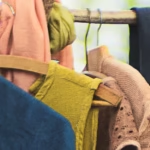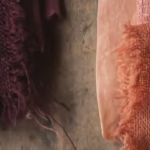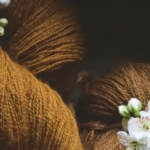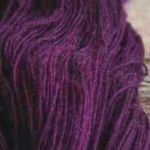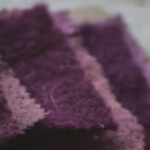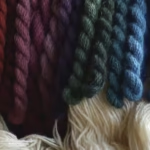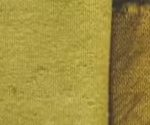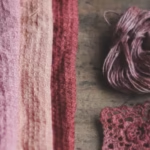How to create yellow, beige or khaki naturally?
Turmeric dyeing lets you experiment with a 100% natural, eco-friendly dye. Along with avocado and onion, turmeric is one of the few plants that doesn’t need any mordant to bind to the fiber. And like rudbeckia dye, you can use turmeric to get yellow, green and pink.
I’m sharing my experience with you on a few linen coupons, which you can also watch on video (in french).
My way is one of many. The idea is to give you the necessary steps and ingredients. Then it’s up to you to vary the proportions, duration of baths and quality of fibers.
The field of possibilities is wide in botanical color, and that’s what makes it so exciting.
A few rules applicable to all botanical dyes
The color obtained varies according to several parameters.
- The quantity of plants calculated according to the weight of the fiber to dye: in my experiment I used turmeric at 100% of the weight of the fiber. So for 100g of fabric, I used 100g of turmeric.
- Plant quality and colorant concentration. I experimented with two different curcumas.
- Water quality: depending on whether your water is hard or soft, the nuances will be different. Turmeric prefers fresh water for a beautiful yellow color. If your water is very hard, you can use demineralized water.
- Cooking times.
- The quality of the fiber to dye: depending on their weave and composition, fibers react differently with plant dyes.
Turmeric dyeing : what you need
- A stainless steel or enamelled iron saucepan or stewpot
- Strainer and cloth cheesecloth for filtering
- An iron sponge or steel wool to recycle
- A jar
- Vinegar
- Lemon juice
- Baking soda
- Turmeric powder
- Fabric squares in natural fibers: cotton, linen, hemp, silk, wool…
To learn more about the equipment needed for natural dyeing.
Turmeric dyeing : the different steps
- Weigh your unprimed fabric.
- Weigh the turmeric at 100% of the weight of your fabric or less, depending on the desired intensity.
- Soak your fabric in lukewarm water.
- Make a decoction of your turmeric: heat to a simmer. Stir regularly. Watch out for splashes. Minimum operating time 45 minutes. Add water if necessary.
- Strain your turmeric decoction and reserve the juice after adding lemon juice.
- Dip the wrung-out fibers into the turmeric juice and heat. Bring to the boil. Stir regularly. Minimum operating time 45 minutes.
- Leave to cool. Remove the fabric, wring it out and dry in the shade. Once dry, rinse.
How to change the color ?
Turmeric dyeing produces deep yellows. But it is possible to change the color and get other shades.
1. For a rosy red: add a good tablespoon of baking soda to half a liter of lukewarm water. Soak your turmeric-dyed fabric for about 5 minutes. Take it out and wring it out.
2. For shades of tawny beige, khaki: the turmeric-dyed linen coupon is soaked in an iron acetate solution. Shades will change according to the soaking time and iron concentration of your solution. Use only on linen or cotton fibers. Do not use animal fibers, wool or silk, as they may be damaged.
How do you make iron acetate solution?
Place half a liter of white vinegar (preferably at 14°) in a jar, and dip a metal scouring sponge or piece of steel wool into it. Close the jar. After a week or so, you’ll have an orange liquid. It’s an iron acetate. You can use a small amount of liquid to make your own shade.
Turmeric is not a lightfast color. In full sun, yellow fades, the color is fugitive. Turmeric should therefore be reserved for indoor use. I’ve noticed that iron-tinted turmeric is more resistant to the sun.
You can watch the Turmeric dyeing video (in french).
FAQs about turmeric Dye
What part of the turmeric is used to dye fabrics and yarns?
The rhizomes, rich in curcuminoids, are used for dyeing with turmeric.
What is the recommanded quantity of Turmeric to dye fabrics?
It is recommanded to use 100 % of the weight of fibers to be dyed.
What colors do turmeric dyeing?
Turmeric dye gives a range of colors that goes from shades of yellow, brick red and reddish-brown
Which fibers can be dyed with turmeric?
All types of fiber animal or plant can be dyed with turmeric. But you can use an iron acetate solution to create beige or khaki, only on plant fibers : cotton, linen or hemp but not on wool or silk.
Does turmeric dye need mordanting?
No you don’t need to mordant the fiber with turmeric dye.
Does turmeric dyeing last?
No the color does not last. It tends to fade in the sun. It is therefore a color to be reserved for indoors fabrics. Or you can redye the fabric when you feel the yellow has lost its brightness.
Why dyeing turmeric and baking soda?
Baking soda is alkaline. So it lowers the pH of water. Once the fabric or thread dyed with turmeric, soak it for about 5 minutes in a bath of half a liter of warm water with a tablespoon of baking soda. The yellow will turn on orange, pink, or red.
Other articles on botanical dyes…
